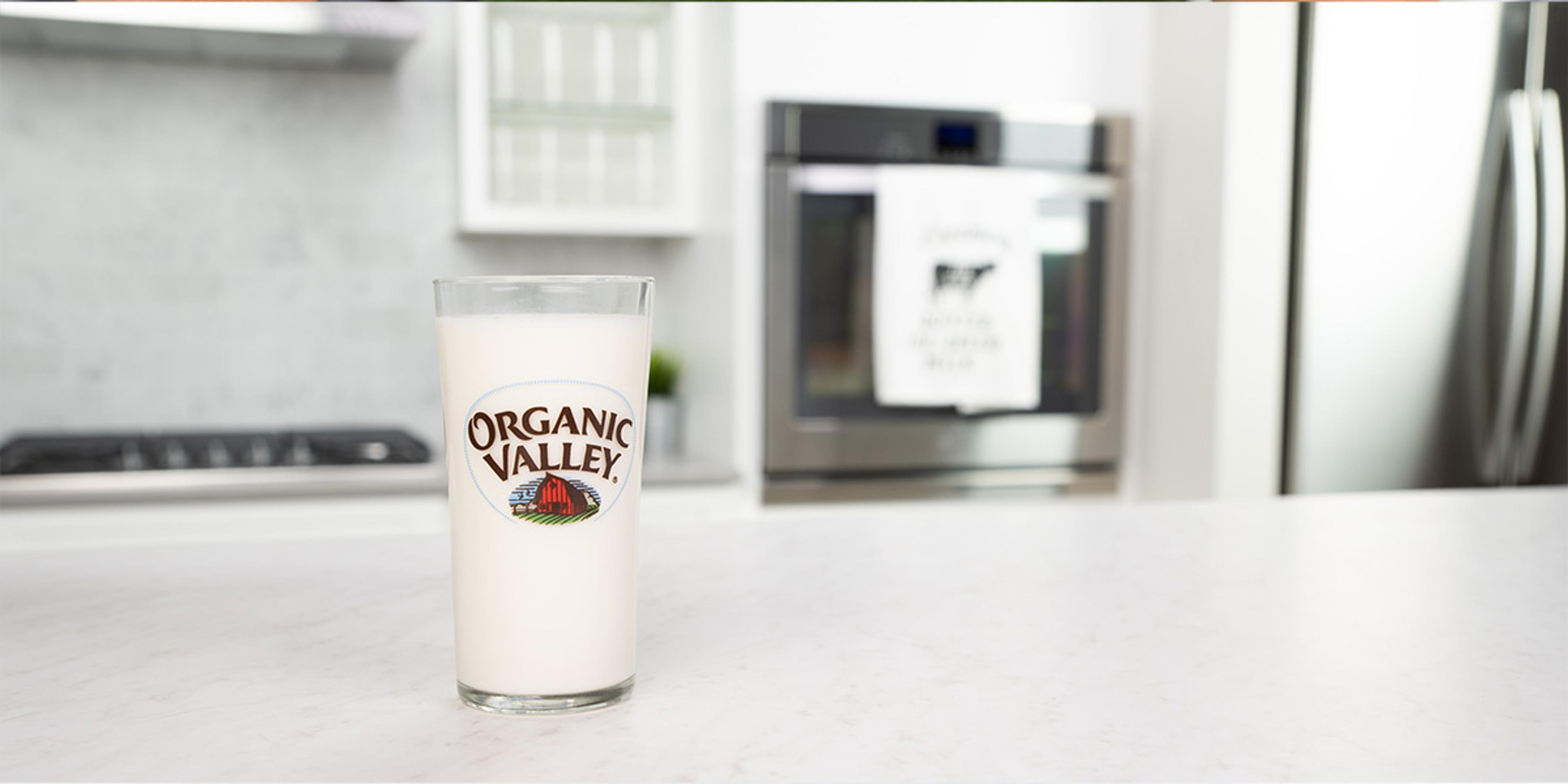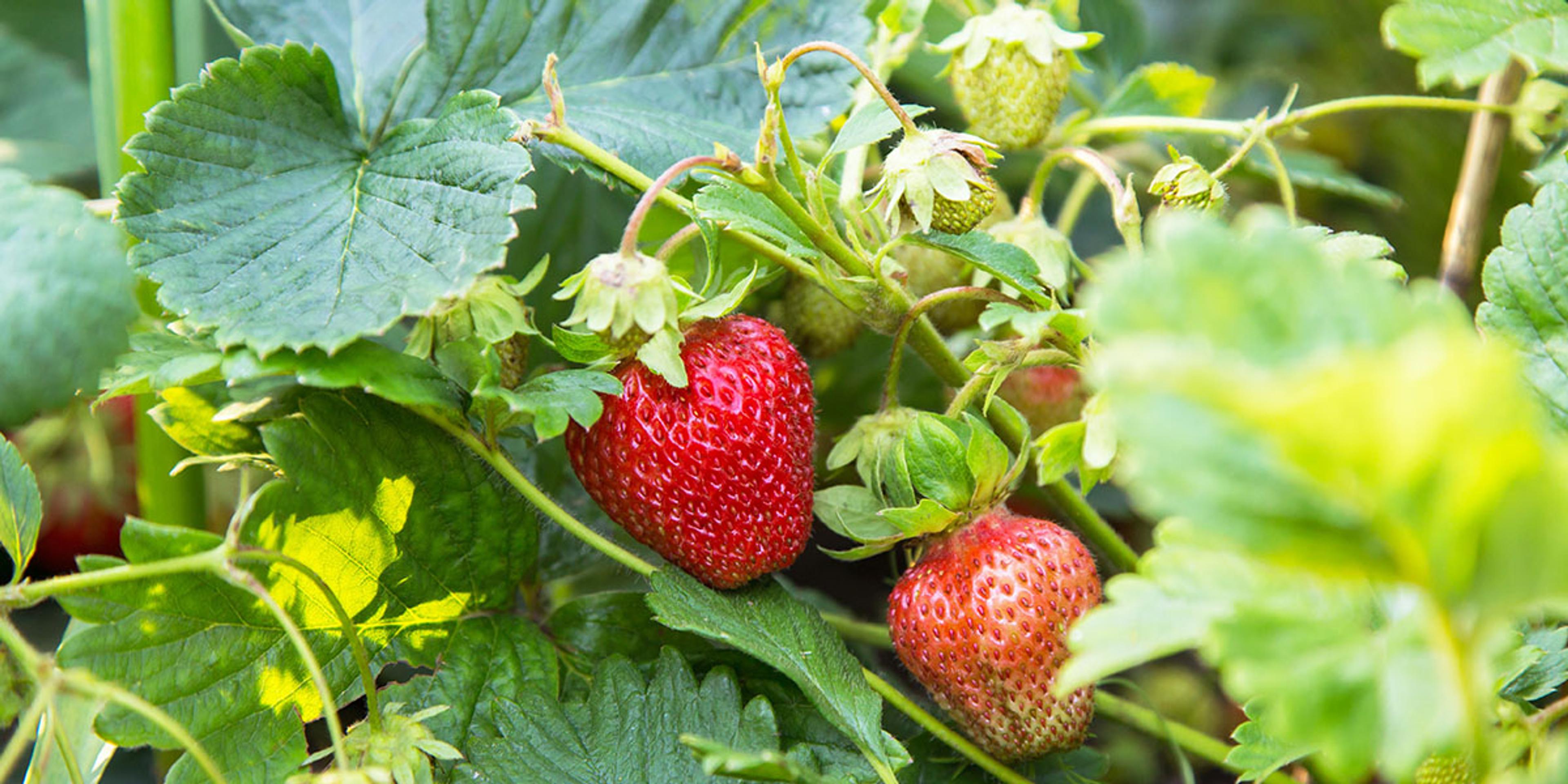
Food
1 Food From Each Food Group You Shouldn’t Trade Down From Organic
When money’s tight, it can be easy to look at the organic food at the grocery store and wonder why it can be more expensive. You might be tempted to trade down from organic to nonorganic food to make your grocery bill cheaper.
While making good nutrition choices in your diet is important even if you can’t go organic, the risks of trading down certain foods for their nonorganic varieties may not be worth it.
We understand that sometimes it’s hard to justify the extra expense of organic food. We don’t want to scare you away from eating healthy food, whether it’s organic or not. What we want to do is help you make smart choices for you and your family. We are suggesting one food from each of the five food groups that you should really consider eating organically.

Dairy Product: Milk
Coming in at the top of the list is milk! While conventional milk still has lots of great nutrients, we suggest organic milk to ensure that you get the most nutrients possible.
Organic milk has about 50% more omega-3 fatty acids than nonorganic milk, according to a study from Newcastle University. Omega-3 fatty acids are instrumental in helping to prevent heart disease, fight infection and aid neurological function, according to the professors that ran the study. A 2018 study also found that Organic Valley Grassmilk® is even more nutritious. Researchers found that it contained 147% more omega-3s and 125% more CLA (conjugated linoleic acid) than traditional whole milk.
Buying organic milk also ensures that the cows are treated well. The U.S. Department of Agriculture requires that for milk to be considered organic, it must come from a USDA-certified organic cow. This means that the farmers have to adhere to certain standards, including:
- The cow must not be treated with antibiotics.
- The cow must be fed exclusively organic feed, free from harmful substances like pesticides.
- The farmers must treat the land the cow grazes on in such a way that it minimizes soil erosion and stays free of toxic chemicals. (Organic Valley has kept 540 million pounds of chemicals out of the environment since 1988.)
- The cow’s living conditions must support the cow’s health and welfare.

Fruit: Strawberries
Strawberries may be a fun summer treat, but they are one of the worst fruits when it comes to pesticide residue. The Environmental Working Group (or EWG) found when pulling data from the latest USDA Pesticide Data Program Summary reports that strawberries were the No. 1 fresh produce item that most commonly had pesticide residue.
About 99% of nonorganic strawberries sampled had remnants of pesticides. This was the case even after rinsing and washing them. According to the University of Washington, pesticides are known to be associated with health problems including cancer, neurological conditions and reproductive issues.
Researchers have found several pesticides on strawberries, but among the most dangerous ones are carbendazim and bifenthrin. According to EWG and the USDA, some farmers growing nonorganic strawberries also use gasses such as methyl bromide to sterilize the soil before planting.
The riskiest nonorganic strawberries are those that are imported and out of season. Buying organic strawberries for your family helps to keep those nasty chemicals out of your body and helps to make sure that the land they grow on is treated right.

Vegetable: Spinach
Spinach may be full of vitamin A, vitamin C and folate, but nonorganic spinach can also be full of pesticides. Some of the pesticides found on spinach, like permethrin, are not permitted to be used on food crops at all in the European Union. It doesn’t matter whether the spinach is frozen, canned or fresh — pesticides may run rampant on nonorganic spinach, even if you wash it.
USDA reports from 2015-2016 showed that pesticide remnants on spinach have increased dramatically since 2008. The USDA also found that out of 642 spinach samples tested in 2016, they contained more pesticides by weight than other crops that they tested. This is why we suggest going with organic spinach.

Grain: Wheat Products
When it comes to grains, it’s a close race between wheat and oats for which one is more commonly contaminated with pesticides, but wheat narrowly comes out as the worst. In several tests and studies, wheat products like cereal and pasta tested positive for traces of a dangerous pesticide called glyphosate.
Pizza is an especially bad offender. In fact, studies done by EWG, the Canadian Food Inspection Agency and environmental activist group Équiterre suggest that up to 90% of popular wheat products are contaminated by glyphosate.
Glyphosate is a known carcinogen that is directly related to an increased risk of non-Hodgkin lymphoma. In fact, a 2019 scientific study concluded that high exposure to glyphosate increases a person’s risk of non-Hodgkin lymphoma by 41%. So while it might be easy to reach for nonorganic frozen pizza or cheap pasta, choosing the organic varieties can reduce this risk.
What About Oats?
Last year, two rounds of tests commissioned by EWG found glyphosate — the active ingredient in Roundup and the most widely used herbicide in the world — in more than 95% of popular oat-based food samples.

Protein: Pork
Pork is in high demand in America, and farmers sometimes feed their pigs food that may contain pesticides and synthetic fertilizer. Pork can be a fatty meat, and pesticides often hide in the fat of animals when digested.
They also treat pigs with antibiotics, which can transfer to you when you eat the pork. Experts have found that repeated exposure to these antibiotics can cause you to develop antibiotic resistance.
When you buy organic pork, you can rest assured that the pigs the pork came from were fed an all-organic diet. The USDA also requires that organic pork come from pigs that are not treated with antibiotics.
Organic Tastes Good!
You may even find organic food more enjoyable to your taste buds. According to studies, some people even think organic food tastes better! A survey conducted by the Pew Research Center also confirmed that about half of people who like to eat organic food think it tastes better.
Organic Valley has been committed to helping the public understand the benefits of organic food and establishing solid standards since its beginning in 1988.
Founder and former CEO (more affectionately known as the “C-E-I-E-I-O”) George Siemon was instrumental in helping establish the national organic standards and has been an influential voice in advocating for organic food for decades.
Is it worth buying organic? We say yes. The health benefits may be worth the splurge.
Laura Spilsbury is a freelance writer and editor with a degree in journalism. Originally from Seattle, she now lives in Oklahoma with her husband, son and two cats. She loves reading, spending time with family and trying to keep her plants alive.
Related Articles
- Tags:
- pesticides & herbicides,
- organic & sustainable living


















